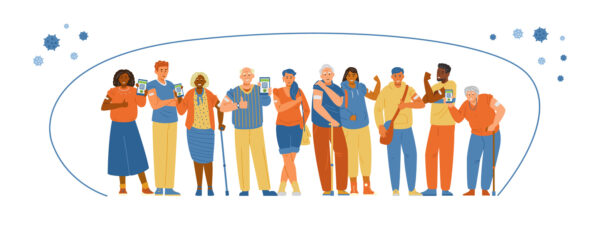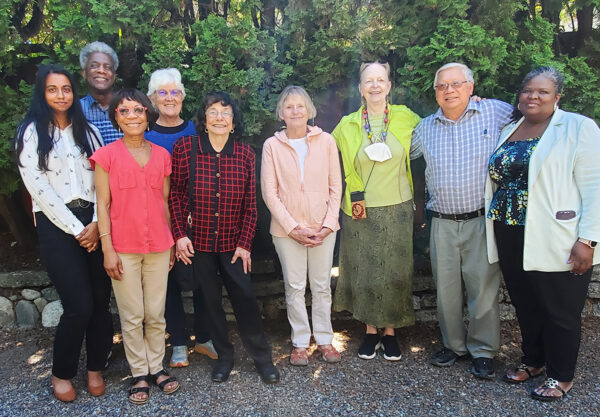Pondering the Benefits of the Pandemic

Most of us are very aware that the COVID-19 pandemic harmed not only our physical health but general welfare. For an extended period, the pandemic made it nearly impossible to get together with friends and family. Social isolation reached new depths. The economy suffered—and many people were out of work. People without technology were unable to communicate with others. Non-emergency medical treatments were postponed. And yes, lives were lost—the worst possible outcome.
I’m beginning to recognize that there were benefits to the pandemic, as well. For instance, children were able to spend more time with their parents and guardians (granted, not always quality time and sometimes downright stressful, but often very good time). While it was challenging to purchase food in the early days of the pandemic, I believe more people enjoyed homecooked meals (hopefully with added nutrition and lower cost). For those who still work, many have experienced an ongoing change in the work environment and routines (e.g., fewer days in an office environment) that may be built on proven competence and increased trust. We have also seen an increase in online learning opportunities, with options that may reduce the overall cost of continuing education in the future. I just read that pop-up restaurants blossomed during the pandemic, and many have grown into permanent establishments, which is good for our economy.
I’m taking a glass-half-full approach right now, but fully aware that people did not experience these benefits equally or equitably.
This month, we celebrate the anniversary of the Americans with Disabilities Act, signed July 26, 1990. This got me thinking about accessibility and the pandemic. The challenges that people without disabilities faced were seriously compounded among people with disabilities. There were some benefits, too.
We saw advances in online captioning—an absolute necessity for people with hearing loss—and transcription. We also saw a surge forward in the use of telehealth—online meetings with health care providers—which helps tremendously when someone is physically unable to travel to a clinic. For some, virtual meetings meant more frequent interactions with family and friends than would have been possible in person.
I found several articles on this topic that list far more benefits than I realized, including:
- The Pandemic’s Silver Linings: Moving Toward a More Inclusive New Normal for People with Disabilities (Network for Public Health Law, 2/10/2022)
- Digital Accessibility: A Pandemic Look Back—And Forward (UW–Madison Information Technology, 11/10/2021)
- The Pandemic of Accessibility (Global Health Council, 10/25/2021)
The pandemic put a new spin on advocacy. Legislative advocacy went virtual, which made it easier for people from the east side of the state to make a difference in Olympia. As one of the articles pointed out, advocacy groups came together in new ways and were effective in making change. We saw new recognition and respect for people with disabilities and the need for accessibility accommodations. Although we’ve got a long way to go, I feel there’s a greater understanding of Universal Design—good design for all ages and all abilities, all the time. We’ve learned a lot.
The COVID-19 public health emergency has ended but the COVID-19 pandemic isn’t over. With luck, effective vaccinations, and continuing attention to physical distancing, mask wearing in crowded places, and handwashing, I hope we will avoid experiencing anything that resembles the loss of lives and the lockdown of 2020 and 2021. Despite some gains, I wouldn’t wish a repeat of these past few years on anyone.
 Contributor Joe Hailey chairs the Seattle-King County Advisory Council on Aging & Disability Services. He welcomes input from readers via e-mail (advisorychair@agewisekingcounty.org).
Contributor Joe Hailey chairs the Seattle-King County Advisory Council on Aging & Disability Services. He welcomes input from readers via e-mail (advisorychair@agewisekingcounty.org).

Mark Your Calendars
Following are upcoming events in which ADS Advisory Council members will participate:
- Independence Day: Tuesday, July 4. This is a national holiday. Aging and Disability Services offices will be closed.
- NW Universal Design Council: Tuesday, July 11 (3–4 p.m.); online. To receive the meeting link, e-mail Dinah.Stephens@seattle.gov in advance.
- ADS Advisory Council: Friday, July 14 9 (12–2 p.m.), virtual only. To receive meeting links and announcements for Advisory Council meetings, e-mail ADS_AdvisoryCouncil-subscribe-request@talk2.seattle.gov
- Mayor’s Council on African American Elders: Friday, July 21 (2:00–3:30 p.m.), virtual only. To receive the meeting link, e-mail Karen.Winston@seattle.gov.
- Age Friendly Civic Coffee: Wednesday, July 26 (3:30–4:45 p.m.). This month’s focus is end-of-life palliative and hospice care. Join in person at South Park Community Center (8201 10th Ave S, Seattle) or join online. For more information about the Civic Coffee and other events, visit our Virtual Events webpage or Facebook. For more information, e-mail agefriendly@seattle.gov.
- 33rd Anniversary of the Americans with Disabilities Act: Wednesday, July 26
![AgeWise King County [logo]](https://www.agewisekingcounty.org/wp-content/themes/agewisekingcounty/images/logo.png)